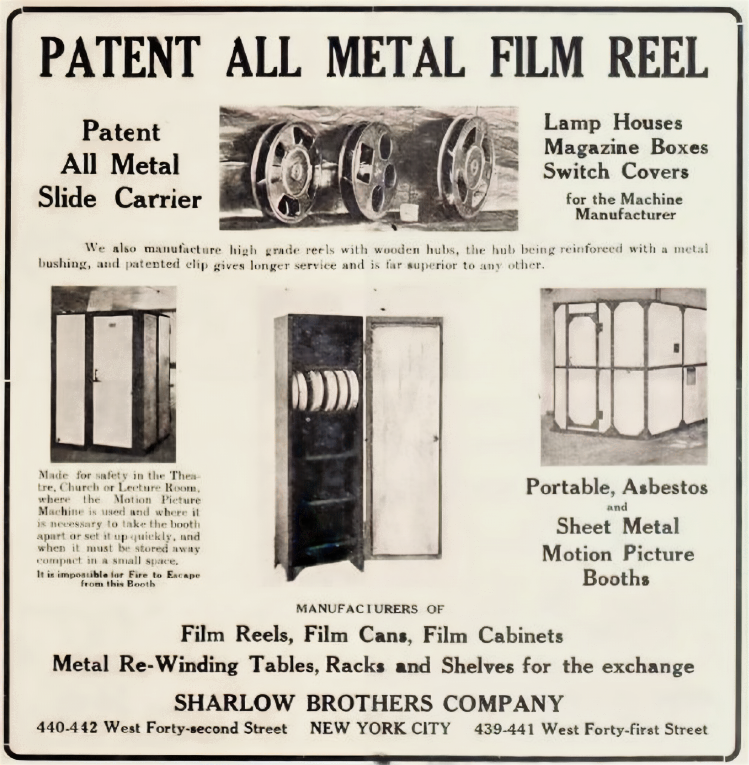In 1855, the first human made plastic was created by treating cellulose with nitric acid. Plasticizing nitrocellulose with camphor resulted in a flexible film base eventually used by Eastman Kodak products starting in 1889. More commonly known as celluloid film, many of the classic movies such as Gone with the Wind, Casablanca, and Citizen Kane were recorded on this medium.

Nitrate film is also inherently unstable and highly flammable. Projector fires and the spontaneous combustion of film in storage were often blamed for destroying or damaging cinemas. In 1914 alone five major studios and film processing plants were victims of destructive fires, including the Éclair Moving Picture Company (Fort Lee, New Jersey), Edison Studios (New York City), Universal Pictures Film Factory (Manhattan) and Edison Company (West Orange, New Jersey).
Movie goers were rightly nervous about going to movie theaters due to the number of fires, and publications such as Motion Picture Magazine prominently displayed advertisements for fire extinguishers and safety booths. One manufacturer of these booths was the Sharlow Brothers, who created a portable, asbestos and sheet metal motion picture booth. The idea behind the portable booth is they could be used by places such churches and schools to render these spaces suitable for screenings.
The advertisement for the Sharlow Brothers motion picture booth shown here appeared on page 129 of the June 13, 1914, issue of the Motion Picture News.
